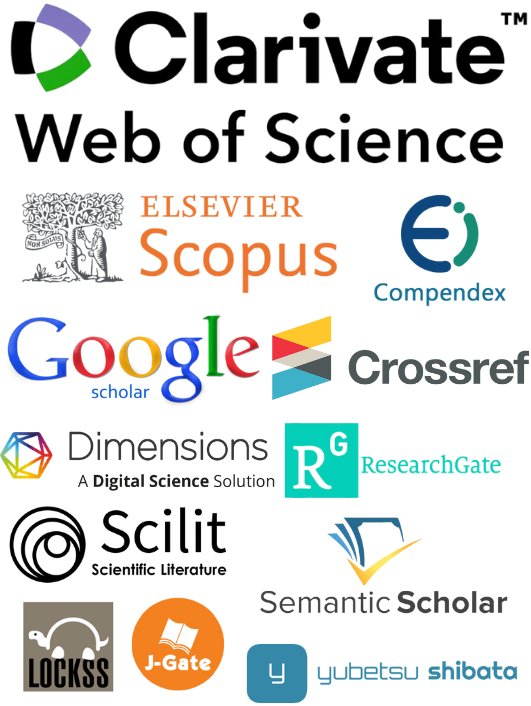Discursive Construction of Traditional Culture of Southwest China in Modern Overseas Travelogues — Take The Land of the Dragon as an Example
DOI:
https://doi.org/10.71222/pbs3n917Keywords:
discursive construction, traditional Chinese culture, modern overseas travelogues, southwestern ChinaAbstract
There is a wealth of travelogues about southwest China left by overseas visitors since 1840. These travelogues record the traditional cultural imprints of the upper and middle reaches of the Yangtze River, including landscapes, architecture, economic development, and social customs. Taking The Land of the Dragon as a representative overseas travelogue, this study aims to investigate the discursive construction of traditional culture in southwest China, particularly along the upper and middle reaches of the Yangtze River. The findings show that the traditional culture in southwest China occupies a unique place in the history of traditional Chinese culture, characterized by rich ethnic characteristics as well as cultural depth and breadth. Overseas travelogues often reflect certain fixed impressions and partial understandings of traditional Chinese culture. This study has both theoretical and practical implications. It first demonstrates the applicability of critical discourse analysis to overseas travelogues about China and enriches methodological approaches through a content analysis of The Land of the Dragon. Second, this study helps to make a better understanding of Chinese traditional culture and enhance the readers' critical reading awareness, call on people to protect nature and traditional culture, and utilize them rationally so as to promote the sustainable development of material culture and spiritual culture.
References
1. X. Liu, "The discursive construction of tradition and modernity in counter-homophobic discourses in China," Crit. Discourse Stud., vol. 21, no. 4, pp. 1–18, 2024, doi: 10.1080/17405904.2024.2412985.
2. A. H. Xiao and S. Liu, "‘The Chinese’ in Nigeria: Discursive Ethnicities and (Dis) embedded Experiences," J. Contemp. Ethnogr., vol. 50, no. 3, pp. 368–394, 2021, doi: 10.1177/0891241620986838.
3. L. Liu, "Discourse construction of social power: Interpersonal rhetoric in editorials of China Daily," in Communicating with the World, New Delhi, India: Routledge India, 2022, pp. 71–88.
4. Y. Chen and Q. Gong, "Unpacking ‘baby man’ in Chinese social media: A feminist critical discourse analysis," Crit. Discourse Stud., vol. 21, no. 4, pp. 400–417, 2024, doi: 10.1080/17405904.2023.2169726.
5. Y. Zhao, et al., "Politics of urban renewal: An anatomy of the conflicting discourses on the renovation of China's urban village," Cities, vol. 111, 2021, Art. no. 103075, doi: 10.1016/j.cities.2020.103075.
6. Y. Yu, R. Li, and T. F. Chan, "Representing the ‘little fresh meat’ phenomenon in the Chinese English-Medium news media: a corpus-assisted critical discourse analysis," J. Asian Afr. Stud., vol. 60, no. 2, pp. 910–925, 2025, doi: 10.1177/00219096231184407.
7. E. Vaara, J. Tienari, and A. Koveshnikov, "From cultural differences to identity politics: A critical discursive approach to na-tional identity in multinational corporations," J. Manag. Stud., vol. 58, no. 8, pp. 2052–2081, 2021, doi: 10.1111/joms.12517.
8. G. Huang and R. Zhao, "Harmonious discourse analysis: Approaching peoples’ problems in a Chinese context," Lang. Sci., vol. 85, 2021, Art. no. 101365, doi: 10.1016/j.langsci.2021.101365.
9. Y. Zou, H. Xiao, and Y. Yang, "Constructing identity in space and place: Semiotic and discourse analyses of museum tourism," Tour. Manag., vol. 93, 2022, Art. no. 104608, doi: 10.1016/j.tourman.2022.104608.
10. Y. Wang and D. Feng, "History, modernity, and city branding in China: a multimodal critical discourse analysis of Xi’an’s promotional videos on social media," Soc. Semiot., vol. 33, no. 2, pp. 402–425, 2023, doi: 10.1080/10350330.2020.1870405.
11. Y. Zhang, et al., "Comparative study of Chinese and American media reports on the COVID-19 and expressions of social re-sponsibility: A critical discourse analysis," J. Psycholinguist. Res., pp. 1–18, 2021, doi: 10.1007/s10936-021-09809-9.
12. T. L. Sandel and Y. Wang, "Selling intimacy online: The multi-modal discursive techniques of China’s wanghong," Discourse Context Media, vol. 47, 2022, Art. no. 100606, doi: 10.1016/j.dcm.2022.100606.
13. Y. Yang and X. Chen, "Globalism or nationalism? The paradox of Chinese official discourse in the context of the COVID-19 outbreak," J. Chin. Polit. Sci., vol. 26, no. 1, pp. 89–113, 2021, doi: 10.1007/s11366-020-09697-1.
14. B. Mulvey and W. Y. W. Lo, "Learning to ‘tell China's story well’: the constructions of international students in Chinese higher education policy," Glob. Soc. Educ., vol. 19, no. 5, pp. 545–557, 2021, doi: 10.1080/14767724.2020.1835465.
15. Y. Yu and H. Sui, "The anxiety over soft masculinity: A critical discourse analysis of the 'prevention of feminisation of male teenagers' debate in the Chinese-language news media," Fem. Media Stud., vol. 23, no. 5, pp. 2188–2201, 2023, doi: 10.1080/14680777.2022.2046124.
16. P. Huang and L. Westman, "China's imaginary of ecological civilization: A resonance between the state-led discourse and sociocultural dynamics," Energy Res. Soc. Sci., vol. 81, 2021, Art. no. 102253, doi: 10.1016/j.erss.2021.102253.
17. Z. T. Chen and M. Cheung, "Consumption as extended carnival on Tmall in contemporary China: a social semiotic multimodal analysis of interactive banner ads," Soc. Semiot., vol. 32, no. 2, pp. 163–183, 2022, doi: 10.1080/10350330.2020.1720992.
18. J. Li and H. Han, "Learning to orient toward Myanmar: Ethnic Chinese students from Myanmar at a university in China," Lang. Cult. Curric., vol. 34, no. 4, pp. 360–378, 2021, doi: 10.1080/07908318.2020.1858095.
19. Y. Zhai, "The politics of COVID-19: The political logic of China’s zero-COVID policy," J. Contemp. Asia, vol. 53, no. 5, pp. 869–886, 2023, doi: 10.1080/00472336.2023.2194322.
20. G. Wang and X. Ma, "Representations of LGBTQ+ issues in China in its official English-language media: A corpus-assisted critical discourse study," Crit. Discourse Stud., vol. 18, no. 2, pp. 188–206, 2021, doi: 10.1080/17405904.2020.1738251.
21. T. Xiong and Y. Peng, "Representing culture in Chinese as a second language textbooks: A critical social semiotic approach," Lang. Cult. Curric., vol. 34, no. 2, pp. 163–182, 2021, doi: 10.1080/07908318.2020.1797079.
22. Y.-J. Hwang, "Reappraising the Chinese school of international relations: a postcolonial perspective," Rev. Int. Stud., vol. 47, no. 3, pp. 311–330, 2021, doi: 10.1017/S0260210521000152.
23. R. Zhou and N. Lee, "The reception of education for sustainable development (ESD) in China: a historical review," Sustainability, vol. 14, no. 7, pp. 4333, 2022, doi: 10.3390/su14074333.
Downloads
Published
Issue
Section
License
Copyright (c) 2025 Junhong Liu, Jingyi Zhao, Fengyao Zhou (Author)

This work is licensed under a Creative Commons Attribution 4.0 International License.


